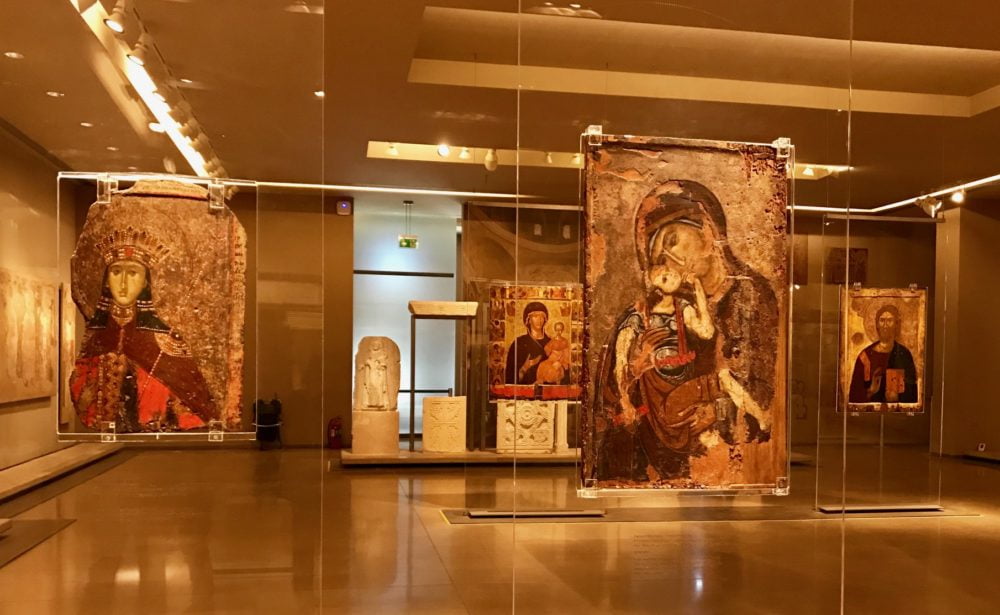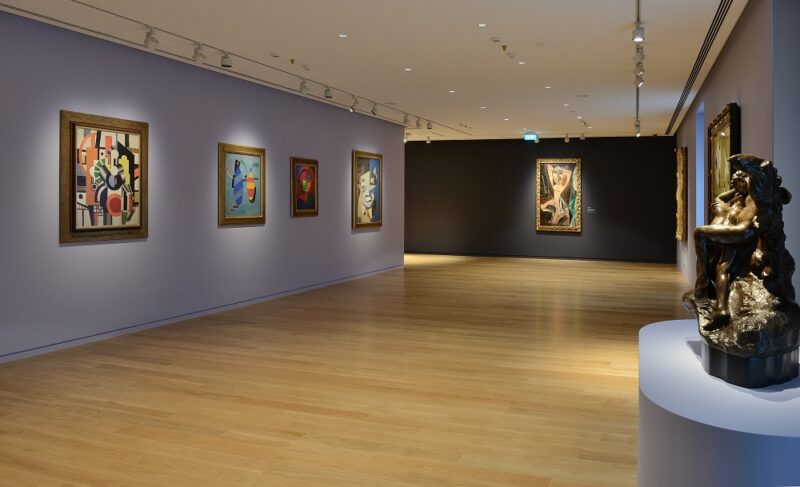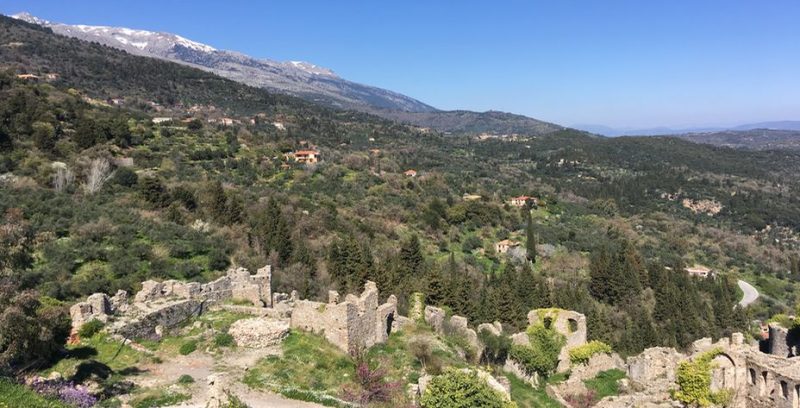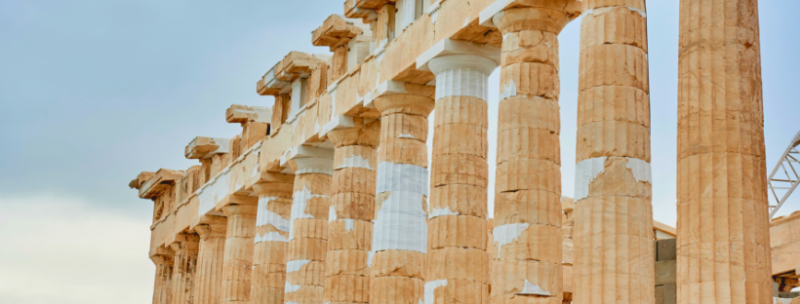Thanks to its rich history, Athens is blessed with some exceptional museums. These are superb showcases for Greek civilization. Both a museum of art and a museum of civilization, the Byzantine and Christian Museum boasts remarkably rich collections. It houses treasures that reveal the Byzantine world from its origins to its fall in 1453 with the capture of Constantinople. And you don’t have to be a religious buff or a fan of Byzantine art to appreciate this museum. Because no one can remain insensitive to the beauty of the works on display.
Practical information on the Byzantine and Christian Museum
Access: The Byzantine and Christian Museum is located at 22 Avenue Vasilissis Sofias, Athens – here on Google maps. By Metro line 3 (blue), Evangelismos stop.
Opening hours: Open daily from 8.30 a.m. to 3.30 p.m., except Tuesdays. The museum is closed on January 1, March 25, Easter, May 1, December 25 and 26.
Admission:
Find out more on the museum’s website.
- Winter (from November 1st until March 31st): 4€
- Summer (from April 1st until October 31st): 8€
- Free for children and young people aged between 6 and 25 years, of member states of the EU, People with disabilities and a companion.
- A 3-day combined ticket 15€ is available for the Archaeological Museum, Byzantine and Christian Museum, Numismatic Museum and Epigraphic Museum.
Free admission for all visitors on March 6, April 18, May 18, the last weekend in September, October 28 and the 1st Sunday of each month from November 1 to March 31.
Contact: Tel (+30) 213 213 9517 / Email: info.bma@culture.gr / Website
Please note that outside the summer season, some rooms may be closed on certain days due to staff shortages.
The main museum building hosts temporary exhibitions. Access is generally included in the entrance fee. So don’t hesitate to take a look.
A museum nestled in a delightful setting
The Byzantine Museum is located in downtown Athens, not far from Syntagma Square. The building, reminiscent of Renaissance villas, is beautiful and the courtyard extremely pleasant. Calm and cool. With its fountain, fruit trees and aromatic plants, it is truly a small urban oasis.
The Byzantine and Christian Museum is housed in the grounds of the former Villa Ilissia, a residence built in 1848 for Sophie de Marbois, known as the Duchess of Plaisance. To find out more about the history of this atypical woman, read our article The Palace of the Duchess of Plaisance. After his death in 1854, the building became the property of the Greek state and served several functions before being made available to the Byzantine Museum in 1926 to house its permanent collections.
We recommend stopping off at the museum’s Café Ilissa. It’s located in the outer courtyard and access is free (no need to buy a ticket). Whether for a drink or lunch, it’s a great place to spend some quality time. The place is quiet and charming.
The interior of the Byzantine Museum is admittedly a little dark, but the collections are superbly presented in vast galleries. More than 3,000 pieces are on public display. And modern supports (Plexiglas, aluminum pillars) beautifully showcase the antique treasures.
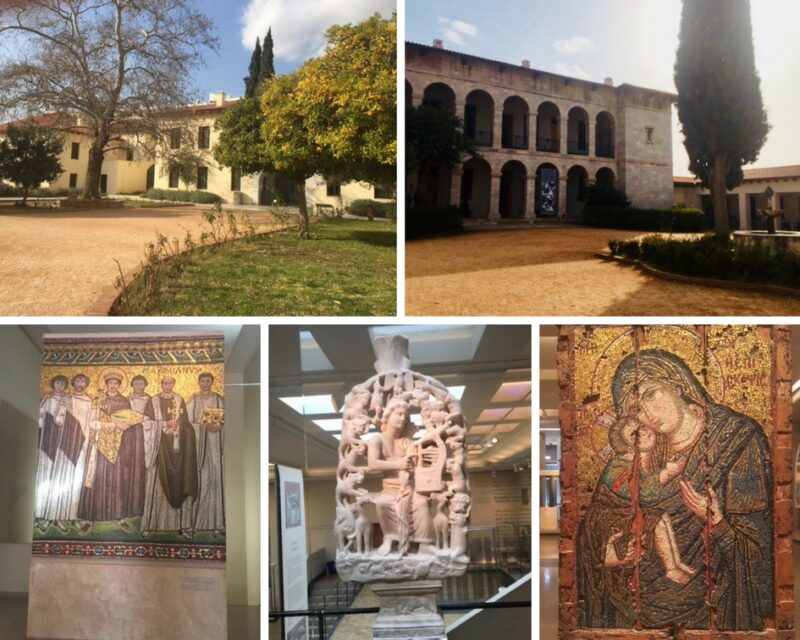
What can you see at the Byzantine and Christian Museum?
The scenography of the Byzantine Museum is interesting. The museum is arranged chronologically, covering a period from the 3rd to the 20th century.
First, maps at the entrance show the extent of the Byzantine empire, which in its heyday spanned three continents. The Byzantine period is a very interesting historical epoch, spanning more than 1,000 years (from 330 to 1453, when Constantinople was taken by the Turks).
A visit to the Byzantine Museum is organized around five main themes:
- from the ancient world to the Byzantine world. This section is particularly instructive, as it shows the transition from pagan rites to Christianity, and highlights the upheaval caused by Emperor Constantine’s decision to impose the Christian religion throughout the empire. We can thus observe the Christianization of pagan temples and, in particular, the transformation of the Parthenon into a Christian church.
- then the Byzantine world : the various works on display in this part of the museum provide a better understanding of the Byzantine world from its origins to its fall. Beliefs, art, politics and privacy…
- then artistic and intellectual activities in the 15th century
- from the Byzantine world to the modern era: the influence of Byzantium on Venetian society, its influence on the Greek islands, Byzantine monasteries, the new Hellenism
- and finally Byzantium and Modern Art: when the past meets the present.
The Byzantine Museum displays both majestic pieces and everyday objects. The collections include icons, murals, sculptures and mosaics, as well as garments, parchments, goldsmiths’ and silversmiths’ objects, bronzes, ceramics and metal utensils.
Not to be missed in the Byzantine and Christian Museum
The highlights of the Byzantine and Christian Museum are:
- church reconstructions: a 5th century Christian basilica (room 2) and a church dome with Christ the Pantochrator painted on it (room 4)
- the impressive Hall of Icons. The special feature of these icons is that they are double-sided, so that they can be seen from both sides during processions.
- the chrysobull (a parchment-like document by which the emperor guarantees privileges), which still bears the signature of Emperor Andronikos II in red
- fragments of walls adorned with magnificent murals
- the Mytilene treasure trove (silver objects and gold jewels hidden by their owners and never recovered), with its stunning modernity.
Some tips for enjoying your visit to the Byzantine and Christian Museum
To truly appreciate the richness of this museum, we can only recommend a guided tour. This allows us to learn more about the Byzantine world and understand the works on display. But also to put the influence of Byzantium on modern-day Greece into perspective.
Alternatively, you can continue your cultural day with a visit to the other museums in the immediate vicinity: the Benaki Museum and the Museum of Cycladic Art. In very different styles, they are both fascinating!
Finally, you can continue your day with a visit to the chic Kolonaki district, located at the foot of Lycabette hill.
Laure M.
Updated on March 29, 2024
